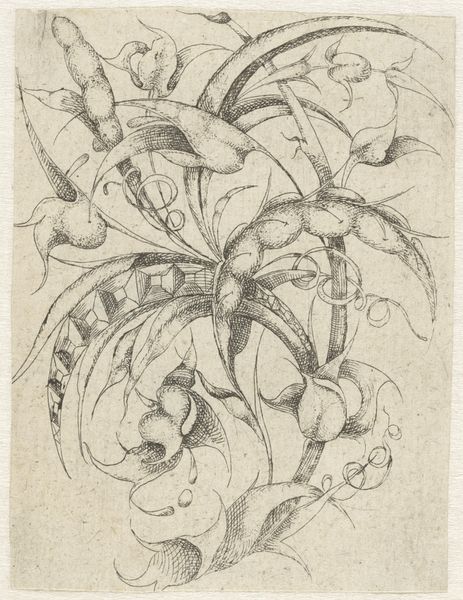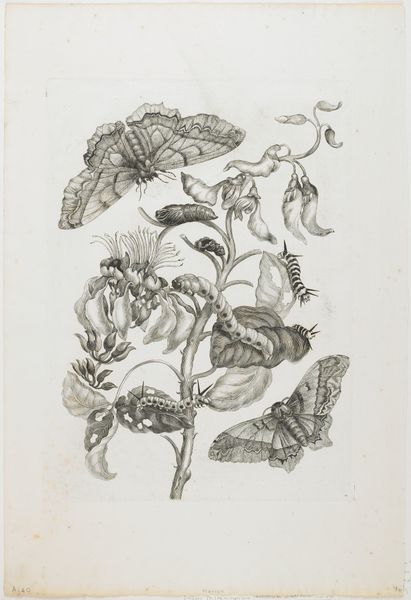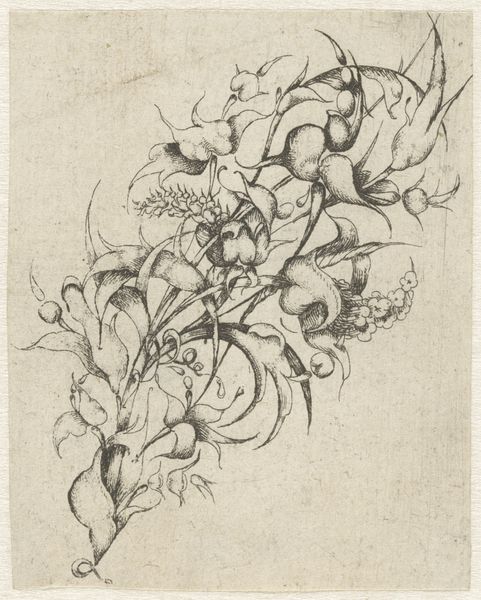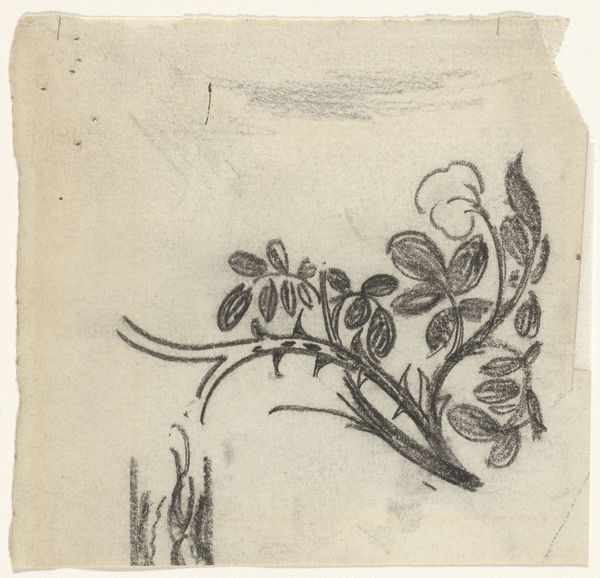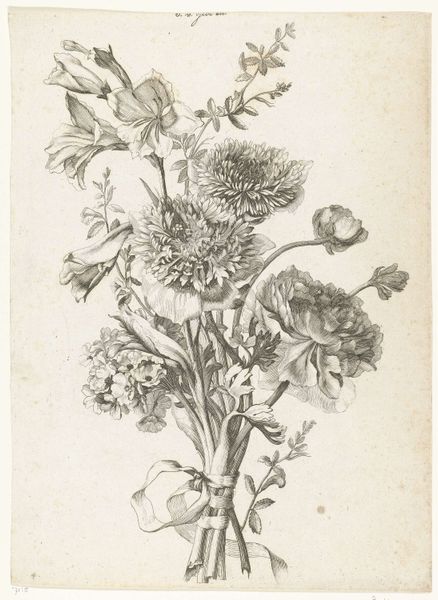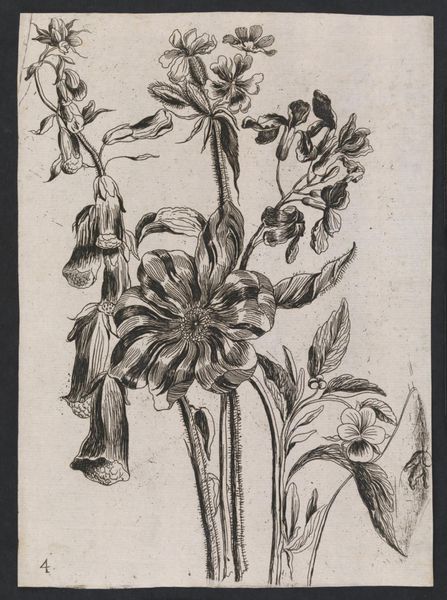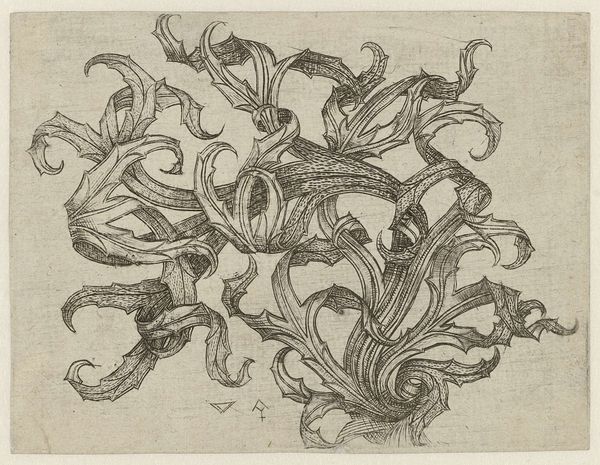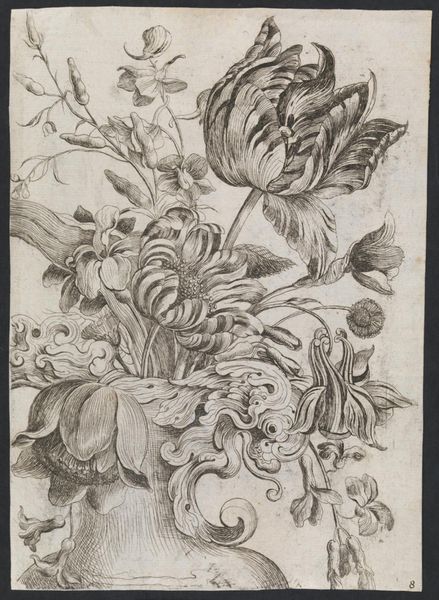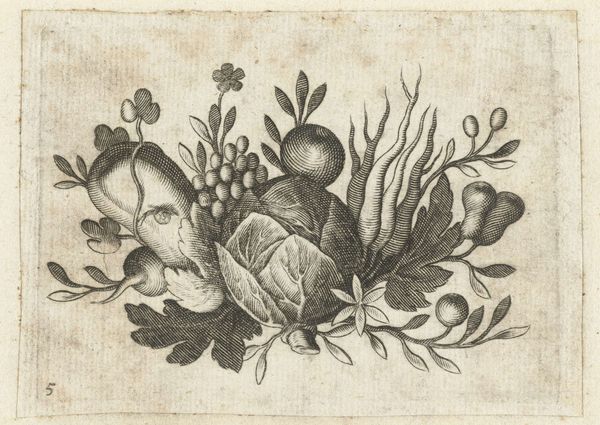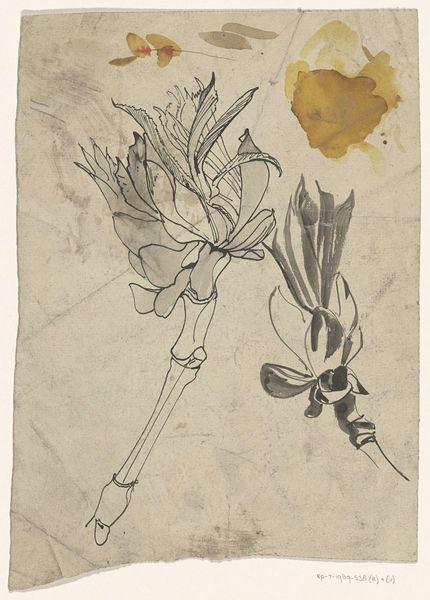
drawing, ink, engraving
#
drawing
#
baroque
#
old engraving style
#
ink
#
engraving
Dimensions: height 81 mm, width 78 mm
Copyright: Rijks Museum: Open Domain
Editor: This is a delicate ink drawing from the 17th century, "Klein boeket met bloemen," by Monogrammist LRSG. The detail is remarkable! I’m struck by how stark it is, a celebration of nature represented in almost scientific detail. What draws your eye when you look at it? Curator: I think it's key to see this beyond just a pretty floral arrangement. Consider the historical context: The 17th century witnessed a burgeoning interest in natural sciences alongside intense religious and political conflict. Could this meticulous rendering of a 'small bouquet' be read as a gesture of resistance, a quiet assertion of beauty and life in the face of broader societal upheaval? Look at how detailed the roots are. What do you make of their prominence? Editor: They’re so detailed! It almost makes it feel as though it isn't really 'cut flowers' at all... Curator: Exactly! The rendering of the roots, the tied ribbon... they remind us of power structures that contain and control. Floral painting in the Baroque era wasn't merely decorative, but about status, knowledge, even control over the natural world, don’t you think? Editor: I didn't think of that; it’s fascinating to consider the act of collecting and categorizing these natural elements as a reflection of societal power. Curator: Precisely! This work encapsulates tensions between science, religion, and burgeoning capitalism within a society grappling with immense change. Thinking about this as more than 'just' a Baroque still life enriches our perception of this piece, and perhaps illuminates similar systems at work today. Editor: I agree. Thinking about the power dynamics transforms my understanding of the image and of art’s reflection of history. Curator: Wonderful! I'm so glad!
Comments
No comments
Be the first to comment and join the conversation on the ultimate creative platform.

